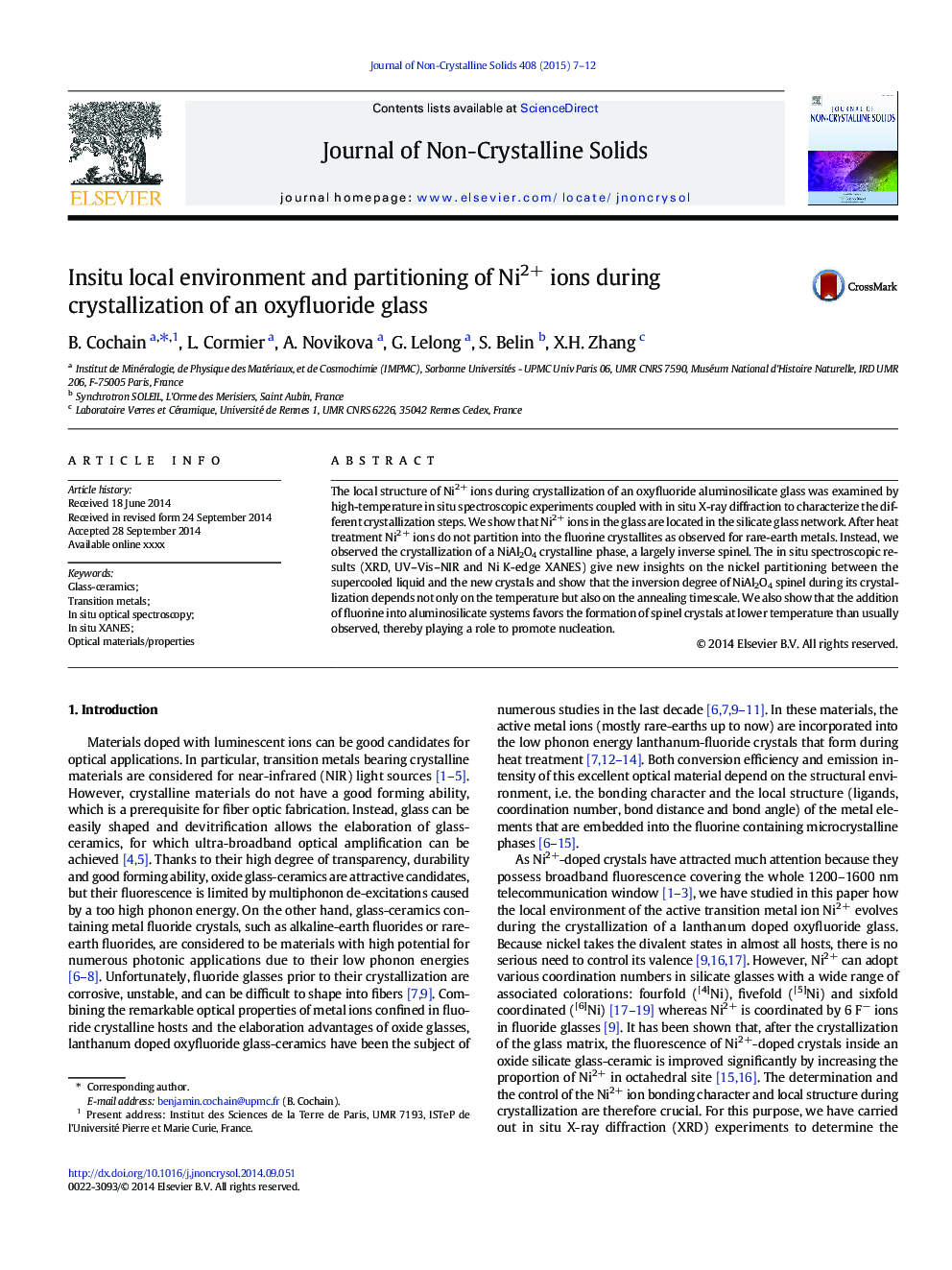| Article ID | Journal | Published Year | Pages | File Type |
|---|---|---|---|---|
| 7901237 | Journal of Non-Crystalline Solids | 2015 | 6 Pages |
Abstract
The local structure of Ni2+ ions during crystallization of an oxyfluoride aluminosilicate glass was examined by high-temperature in situ spectroscopic experiments coupled with in situ X-ray diffraction to characterize the different crystallization steps. We show that Ni2+ ions in the glass are located in the silicate glass network. After heat treatment Ni2Â + ions do not partition into the fluorine crystallites as observed for rare-earth metals. Instead, we observed the crystallization of a NiAl2O4 crystalline phase, a largely inverse spinel. The in situ spectroscopic results (XRD, UV-Vis-NIR and Ni K-edge XANES) give new insights on the nickel partitioning between the supercooled liquid and the new crystals and show that the inversion degree of NiAl2O4 spinel during its crystallization depends not only on the temperature but also on the annealing timescale. We also show that the addition of fluorine into aluminosilicate systems favors the formation of spinel crystals at lower temperature than usually observed, thereby playing a role to promote nucleation.
Related Topics
Physical Sciences and Engineering
Materials Science
Ceramics and Composites
Authors
B. Cochain, L. Cormier, A. Novikova, G. Lelong, S. Belin, X.H. Zhang,
